When our beloved canine companions begin limping after a period of rest or sleep, it naturally raises concerns for any pet owner. The reasons behind this phenomenon can be varied and complex, ranging from simple stiffness to more serious health conditions. Understanding these causes is crucial not only for providing immediate relief but also for ensuring the long-term health and happiness of our pets.
Common Reasons for a Dog Limping After Laying Down
When our dogs limp after resting or sleeping, it’s crucial for us to understand the underlying causes. This knowledge helps us address their discomfort effectively.
- Muscle stiffness and soreness: Dogs, especially as they age, can experience stiffness or soreness in their muscles after a period of inactivity. This can be due to a variety of factors including overexertion, lack of regular exercise, or even the onset of more chronic issues.
- Arthritis and joint pain: One of the most common reasons for limping in older dogs is arthritis. This degenerative joint disease causes pain and inflammation in the joints, which can be more pronounced after lying down for extended periods.
- Nerve issues: Nerve problems, ranging from mild irritations to severe conditions like intervertebral disc disease, can cause limping. These issues may be exacerbated after your dog has been resting or sleeping.
- Injury or trauma: Sometimes, an injury or trauma, not immediately noticeable, might be the cause of your dog’s limping. This can range from minor sprains to more serious conditions that require veterinary attention.
- Circulatory problems: Poor circulation can lead to discomfort and limping in dogs. This may become more noticeable after they’ve been lying down for a while.
- Hip dysplasia: A genetic condition more common in larger breeds, hip dysplasia affects the hip joint’s normal function, leading to pain and limping, often noticeable after resting.
- Muscle strains: Overexertion or a sudden increase in activity can lead to muscle strains, causing your dog to limp.
- Bone fractures: Fractures, even hairline ones, can cause significant pain and limping. These may not always be immediately apparent, thus the importance of knowing when a dog’s leg is broken or just sprained.
- Bone cancer (osteosarcoma): Though less common, canine osteosarcoma, a type of bone cancer, can cause limping and is often associated with pain after periods of inactivity.
- Lyme disease: Transmitted by ticks, Lyme disease can cause a host of symptoms in dogs, including joint pain and limping, which may be more noticeable after your dog has been lying down.
Understanding these potential causes is the first step in addressing our dogs’ discomfort and helping them maintain a good quality of life. Each condition requires a different approach, and in some cases, specialized support like that provided by canine wheelchairs can be invaluable.
How limping can manifest differently in dogs
Understanding the varied manifestations of limping in dogs is key to identifying the root cause and determining the best course of action.
Gradual versus sudden onset: Limping in dogs can appear either gradually over time or suddenly. Gradual limping often indicates chronic issues like arthritis, whereas a sudden onset might suggest an injury or acute condition.
Weight-bearing versus non-weight-bearing: Some dogs may limp but still put some weight on the affected limb (weight-bearing limp), which often suggests a less severe injury. In contrast, a non-weight-bearing limp, where the dog refuses to put any weight on the leg, usually indicates a more serious condition.
Limping severity: The severity of the limp can vary significantly. Mild limping might be hardly noticeable and only present after long periods of rest, whereas severe limping can be obvious and constant.
Why limping may occur after laying down or sleeping: After periods of inactivity, such as sleeping or lying down, stiffness and discomfort in the joints or muscles can become more pronounced, leading to limping. This is especially common in older dogs or those with chronic health issues.
Other signs and symptoms to watch for
In addition to limping, there are other signs and symptoms that can indicate a dog is experiencing discomfort or a health issue that requires attention.
Altered gait: Changes in the way a dog walks can be a subtle sign of discomfort or injury. An altered gait might include favoring one leg, hesitancy in movement, or an uneven rhythm in their walk.
Vocalization: Dogs in pain may vocalize more. This can include whining, whimpering, yelping, or even growling when moving or being touched in a sensitive area.
Changes in behavior: Pain and discomfort can lead to changes in a dog’s behavior. This might include decreased activity, reluctance to play or go on walks, increased time spent resting, or even aggression if they are in significant pain.
Swelling or tenderness: Any swelling or tenderness in the limbs or joints can be a sign of injury or disease. This may be more noticeable when the dog is touched or when they move.
These signs, along with limping, are indicators that something is amiss with our canine companions. Early detection and intervention are key.
When to Seek Immediate Veterinary Attention
Recognizing when a dog’s limping or associated symptoms necessitate immediate veterinary care is crucial for their health and well-being.
Signs of severe pain: If a dog shows signs of severe pain, such as vocalizing intensely, shaking, or being unable to settle, immediate veterinary attention is needed. Pain can be an indicator of a serious underlying issue.
Sudden onset of limping: If a dog suddenly starts limping, especially if it’s a non-weight-bearing limp, it’s important to consult a veterinarian promptly. This could indicate a serious injury or condition like a fracture or dislocation.
Inability to bear weight: If a dog is completely unable to bear weight on a limb, it’s a sign that something significant is wrong. This could be due to a severe injury, a neurological issue, or a serious joint problem.
Persistent limping lasting more than 24-48 hours: If limping persists for more than a day or two, even if it seems mild, it’s important to get it checked. Persistent limping can be a sign of chronic conditions like arthritis or degenerative diseases that need management.
Diagnosing the Cause of Limping in Dogs
Determining the exact cause of a dog’s limping is essential for effective treatment and management. Here’s how a veterinarian can help diagnose the issue:
The importance of consulting a veterinarian: Veterinary professionals have the expertise to assess and diagnose the cause of limping. Their evaluation is crucial as it guides the appropriate treatment plan.
The role of early intervention in preventing long-term issues: Early diagnosis and treatment can prevent the progression of many conditions that cause limping. Delay in treatment can lead to worsening symptoms and potentially more serious complications.
Discussing your dog’s medical history: Providing a complete medical history to the veterinarian is crucial. Past injuries, previous illnesses, and any significant changes in behavior or activity levels can offer valuable clues.
Veterinary examination and diagnostic tests:
Physical examination: A veterinarian will conduct a thorough physical examination to assess the dog’s overall condition, focusing on the musculoskeletal system, joints, and the affected limb.
X-rays and imaging: Imaging tests like X-rays, MRIs, or CT scans can provide detailed views of bones and soft tissues, helping to identify fractures, joint issues, or other internal problems.
Blood tests: These can reveal underlying conditions like infections or inflammatory diseases that might contribute to limping.
Joint aspiration: In some cases, extracting and analyzing fluid from a joint can help diagnose conditions like arthritis or infections.
Treatment and Management Strategies
Once the cause of a dog’s limping is diagnosed, a multifaceted approach to treatment and management is often necessary. Here are some strategies:
Medical interventions
Depending on the diagnosis, treatment may include pain relief, anti-inflammatory drugs, and other medications. These interventions aim to reduce pain, inflammation, and support overall joint health.
Physical therapy and rehabilitation
Techniques such as massage, hydrotherapy, and specific exercises can be highly effective. They help in strengthening muscles, increasing flexibility, and improving overall joint function.
Canine wheelchairs
- Benefits of Dog Wheelchairs: For dogs with chronic conditions, injuries, or mobility issues, K9 Carts’ dog wheelchairs can be life-changing. They allow dogs to move around more freely, reducing the strain on injured or arthritic joints and enhancing their quality of life.
- Customization and Comfort: Each dog’s needs are unique, and so K9 Carts offers customization options to ensure a perfect fit for different dog sizes and conditions. This customization is key to providing comfort and support where it’s needed most.
- Integrating K9 Carts with Treatment Plans: In many cases, dog wheelchairs can complement medical treatments. They provide mobility support during recovery, allowing dogs to stay active and engaged, which is vital for their physical and mental health.
Learn more about K9 Carts’ dog wheelchairs and how they can benefit your furry friend:
Lifestyle adjustments
Changes in diet, exercise routines, and environment can also play a crucial role in a dog’s recovery and ongoing health. Appropriate diet and exercise help maintain a healthy weight, reducing stress on joints, while environmental modifications like ramps can make daily activities easier and safer for dogs with mobility issues.
These treatment and management strategies, particularly when combined, can make a significant difference in a dog’s life, especially for those facing long-term mobility challenges. A comprehensive approach, including the use of supportive devices like K9 Carts’ wheelchairs, ensures that our canine companions continue to live happy, active lives despite their mobility issues.
How to Prevent Limping in Dogs
Preventing limping and associated mobility issues in dogs involves a proactive approach to their overall health and well-being. Here are some key strategies:
Maintaining a healthy weight
Keeping a dog at a healthy weight is crucial. Excess weight puts additional stress on joints and can exacerbate conditions like arthritis. Regular vet check-ups and a balanced diet are essential in managing a dog’s weight.
Regular exercise and conditioning
Regular, appropriate exercise helps maintain strong muscles and flexible joints, which can prevent injuries and conditions that lead to limping. The exercise regimen should be suited to the dog’s age, breed, and health status.
Proper nutrition and supplements
A diet rich in nutrients that support joint health can be beneficial. Supplements like glucosamine and chondroitin may also help, but it’s important to consult with a veterinarian before starting any supplements.
Routine veterinary check-ups
Regular check-ups with a veterinarian can help catch and manage health issues before they become serious. These visits are an opportunity to assess a dog’s overall health and make adjustments to their care routine as needed.
Safe sleeping arrangements for your dog
Providing a comfortable, supportive place to sleep can help prevent stiffness and soreness. Orthopedic beds are especially beneficial for older dogs or those with arthritis.
Incorporating these preventive measures into our daily care routine can greatly reduce the risk of our dogs developing mobility issues. Alongside these steps, awareness of the supportive devices available, such as K9 Carts’ custom-built dog wheelchairs, can be invaluable.
These wheelchairs offer an additional means of support, particularly for dogs who may already be experiencing mobility issues, ensuring they continue to enjoy a good quality of life. By combining preventive care with supportive measures, we can help our canine companions lead healthier, more comfortable lives.


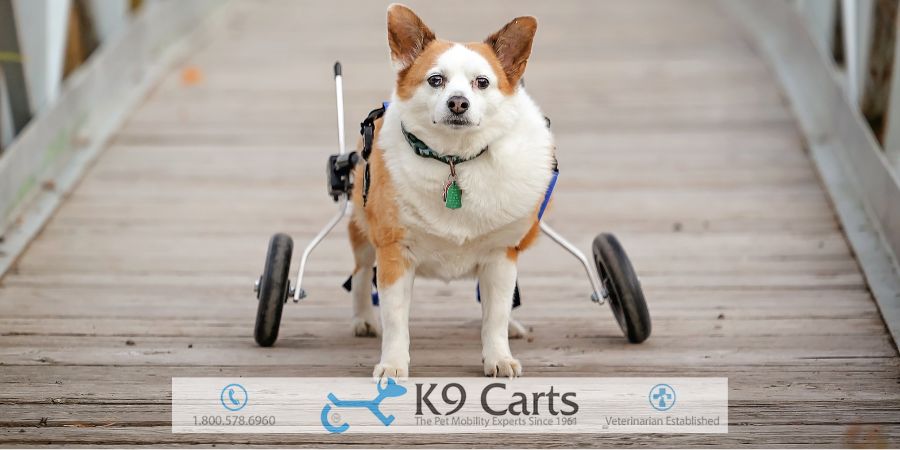
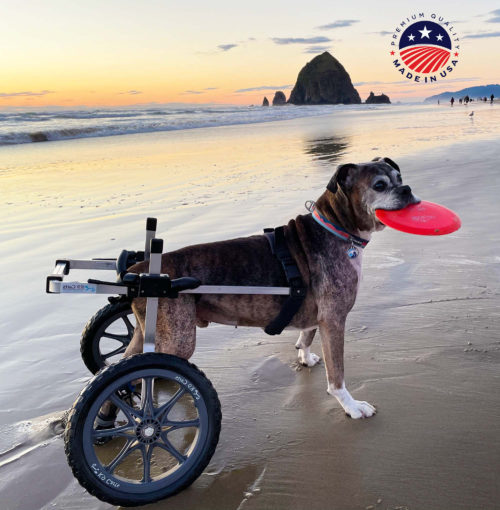
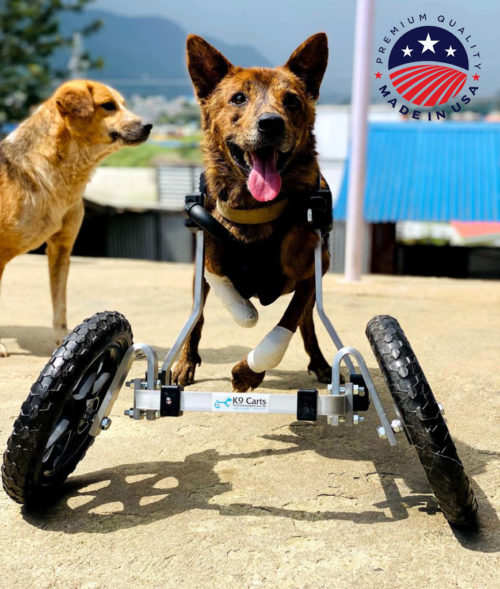
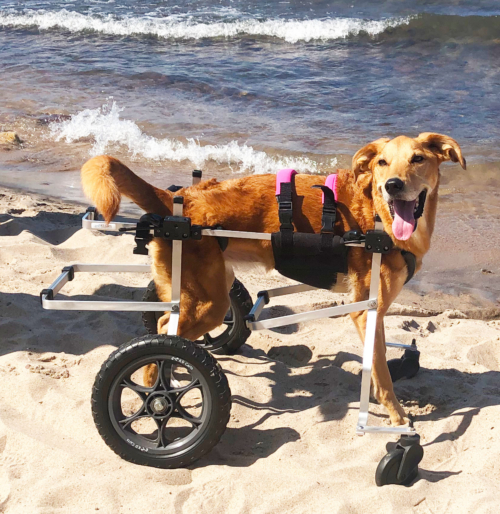

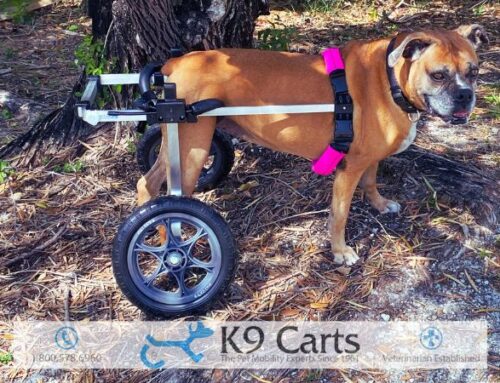

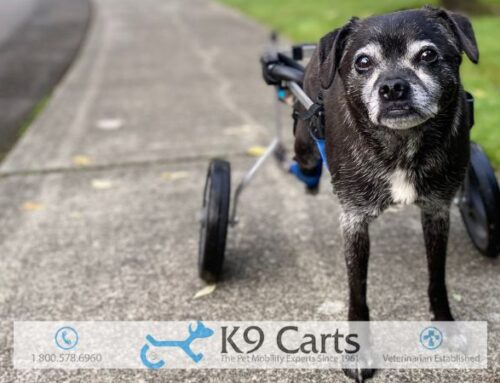
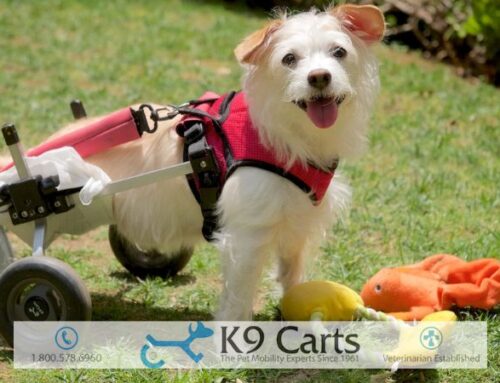
Leave A Comment